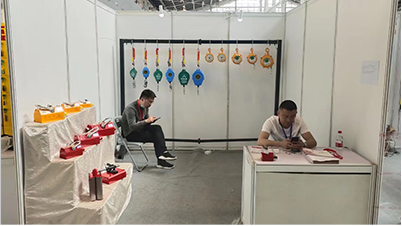heavy machinery relocation
Heavy Machinery Relocation A Comprehensive Guide
Relocating heavy machinery is a complex task that requires meticulous planning, specialized equipment, and skilled personnel. Industries such as construction, mining, manufacturing, and logistics often need to move large and heavy equipment from one location to another. The process can be fraught with challenges, but with the right strategies in place, a smooth and efficient relocation is possible.
Understanding the Importance of Heavy Machinery Relocation
Heavy machinery, including excavators, bulldozers, cranes, and industrial equipment, plays a crucial role in various projects. These machines are not only costly but also pivotal to the operational efficiency of an organization. Relocation might be necessary due to changes in project scope, the need to move to a new site, or even logistical reasons. Efficient relocation minimizes downtime, optimizes resource allocation, and ensures that projects stay on schedule.
Planning the Relocation
The first step in any heavy machinery relocation is thorough planning. This involves assessing the machinery that needs to be moved, understanding the new location, and developing a timeline for the relocation process. Key aspects to consider include
1. Inventory Assessment Create a detailed list of all machinery that needs to be relocated, including their dimensions, weight, and any special requirements for transport.
2. Site Evaluation Visit the new site to understand the layout, accessibility, and any potential obstacles that could impact the relocation process. This includes examining ground conditions, exit and entry points, and available space for unloading machinery.
3. Logistics and Transportation Choose the appropriate transportation method based on the type of machinery. Options may include flatbed trucks, specialized trailers, or heavy lift transporters. Ensure that permits and licenses are obtained for transporting oversized loads, if necessary.
4. Timeline Development Create a realistic timeline that accounts for loading, transport, unloading, and setup at the new location. Incorporate buffer time for unexpected delays.
Engaging Professionals
heavy machinery relocation

Given the complexity of heavy machinery relocation, it is advisable to engage professionals who specialize in this field. Experienced heavy equipment movers have the necessary knowledge and resources to ensure a safe and efficient relocation. They can manage the logistical aspects, offer expert advice on transport methods, and handle any unforeseen challenges that may arise during the process.
Safety Considerations
Safety is paramount in heavy machinery relocation. Precautions should be taken to protect both personnel and equipment. This includes
- Conducting risk assessments to identify potential hazards. - Ensuring that operators and workers are properly trained and equipped with personal protective equipment (PPE). - Utilizing proper rigging and lifting techniques to prevent accidents. - Complying with industry regulations and standards throughout the relocation process.
Unloading and Setup
Once the machinery reaches its new location, careful unloading is essential to prevent damage. Coordination between transport operators and site personnel will ensure that machinery is positioned correctly for immediate use. Follow the manufacturer’s guidelines for setup and commissioning, and conduct thorough inspections to confirm that all systems are operational.
Post-Relocation Review
After the relocation, conduct a post-relocation review to identify any issues that may have arisen during the process and to assess the overall efficiency of the move. Gathering feedback from operators and site managers can provide valuable insights for future relocations.
Conclusion
Heavy machinery relocation is a demanding process that, when executed correctly, can lead to significant operational efficiency and project success. By investing time in planning, engaging qualified professionals, prioritizing safety, and performing thorough evaluations, businesses can ensure a smooth transition for their vital machinery. In an industry where time is money, a well-coordinated relocation can make all the difference in meeting deadlines and maintaining productivity.
-
Unlock Seamless Relocation with Our Heavy Equipment Moving ExpertiseNewsJun.06,2025
-
Unleash Unrivaled Flexibility with Our Adjustable Gantry CraneNewsJun.06,2025
-
Unleash Heavy-Duty Efficiency with Our Industrial Gantry Crane SolutionsNewsJun.06,2025
-
Revolutionize Steel Handling with Our Magnetic Lifter RangeNewsJun.06,2025
-
Master Equipment Mobility with Premium Machinery Mover SolutionsNewsJun.06,2025
-
Elevate Your Material Handling with Magnetic Lifter TechnologyNewsJun.06,2025
-
YS Permanent Lifting Magnets: The Smarter Way to Handle SteelNewsMay.22,2025
